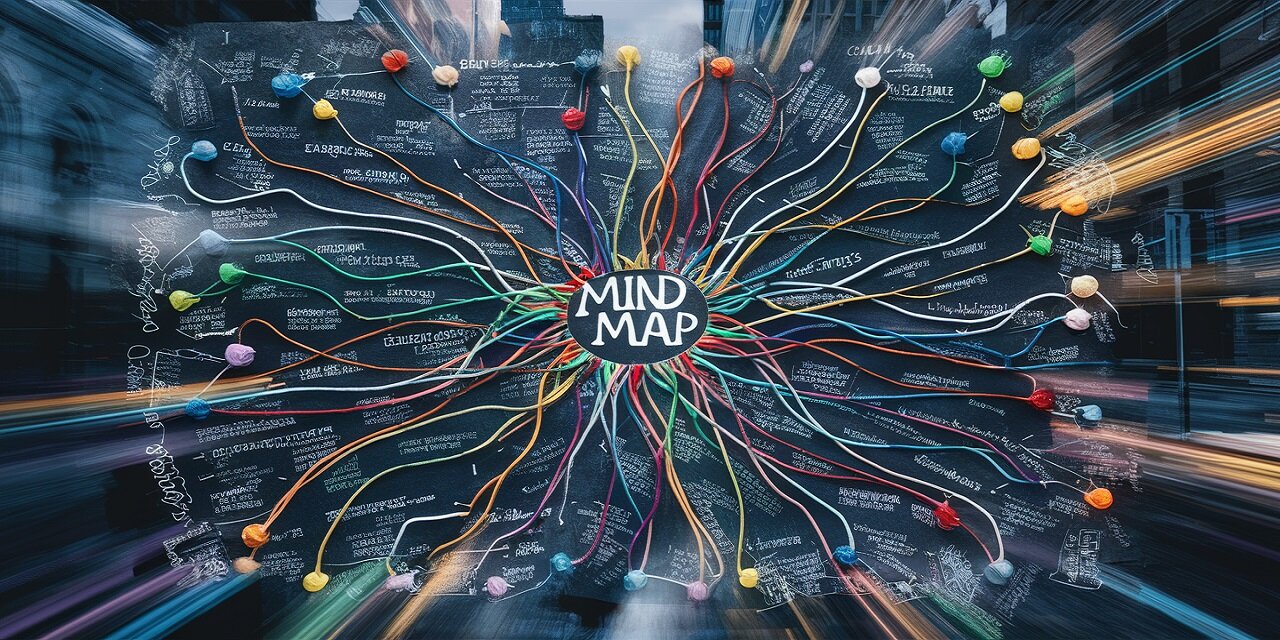
Mind Mapping
Mind mapping is a powerful tool that facilitates creativity, enhances organization and improves memory retention. By visually structuring information, mind maps allow individuals to generate ideas, solve problems and plan projects more effectively. This article explores the concept of mind mapping, its benefits, how to create mind maps and practical applications in various fields.
What is Mind Mapping?
Mind mapping is a graphical technique used to represent ideas, tasks or other concepts linked around a central theme. Developed by Tony Buzan in the 1970s, this method mirrors the way the human brain naturally processes information. Unlike linear note-taking or list-making, mind mapping involves creating a visual diagram that captures relationships between different pieces of information.
A typical mind map starts with a central idea placed at the center of the page. From this central idea, branches extend outward, each representing a related subtopic or idea. These branches can further subdivide into more detailed points, creating a structured yet flexible visual representation of information.
Benefits of Mind Mapping
Mind mapping offers numerous cognitive and practical benefits:
- Enhances Creativity: By providing a non-linear way to organize thoughts, mind mapping encourages free association and the generation of new ideas. It allows the brain to make connections between concepts that might not be immediately obvious in a traditional list format.
- Improves Memory Retention: The visual and hierarchical structure of mind maps makes it easier to remember and recall information. Studies have shown that mind mapping can enhance both short-term and long-term memory.
- Boosts Productivity: Mind maps help in organizing tasks and projects, making it easier to break down complex activities into manageable steps. This clarity can lead to more efficient planning and execution.
- Facilitates Problem-Solving: By visually laying out all aspects of a problem, mind mapping allows for a comprehensive view of the situation. This can lead to more effective brainstorming and problem-solving strategies.
- Enhances Learning: Mind maps cater to different learning styles by combining visual, kinesthetic and auditory elements. They are particularly useful for students and educators in summarizing and reviewing material.
How to Create a Mind Map
Creating a mind map is a straightforward process, but it can vary slightly depending on the purpose and complexity. Here are the basic steps:
- Start with a Central Idea: Write down the main topic or idea in the center of the page. This will be the focal point of your mind map.
- Add Branches for Key Concepts: From the central idea, draw branches outward. Each branch represents a major subtopic or key concept related to the main idea.
- Expand with Sub-branches: For each key concept, add sub-branches to include more detailed information or related ideas. Continue this process to capture all relevant aspects of the topic.
- Use Keywords and Phrases: Keep the text on branches concise. Use keywords or short phrases to capture the essence of each idea.
- Incorporate Colors and Images: Use different colors for branches to categorize information and make the mind map visually appealing. Adding images or icons can further enhance memory retention and creativity.
- Review and Refine: Once the mind map is complete, review it to ensure all important aspects are covered. You can also rearrange branches if needed to better reflect the relationships between ideas.
Practical Applications of Mind Mapping
Mind mapping is versatile and can be applied in various professional and personal contexts. Here are some practical uses:
- Brainstorming Sessions: During team meetings or individual brainstorming sessions, mind maps can capture a wide range of ideas quickly. This visual representation helps in identifying connections and prioritizing concepts.
- Project Planning: For project management, mind maps can outline tasks, timelines and resources. Breaking down the project into smaller, manageable parts makes it easier to track progress and meet deadlines.
- Note-Taking: Students and professionals can use mind maps to take notes during lectures, meetings or while reading. This method helps in organizing information logically and enhancing comprehension.
- Decision Making: When faced with complex decisions, mind maps can lay out all options, factors and potential outcomes. This comprehensive view aids in making informed choices.
- Presentations: Mind maps can serve as visual aids during presentations. They provide a clear and engaging way to convey information, making it easier for the audience to follow along.
- Learning and Studying: Students can use mind maps to summarize chapters, organize research and prepare for exams. Educators can also use mind maps to plan lessons and present information in a structured manner.
- Personal Development: Individuals can use mind maps for goal setting, self-reflection and personal growth. By visually mapping out their aspirations and plans, they can create actionable steps toward achieving their goals.
Digital Mind Mapping Tools
While traditional pen-and-paper mind mapping is effective, digital tools offer additional benefits such as easy editing, sharing and collaboration. Here are some popular mind mapping software and applications:
- MindMeister: An online mind mapping tool that allows real-time collaboration. It’s user-friendly and integrates with other productivity tools.
- XMind: A versatile tool that offers various templates and themes. It’s suitable for both personal and professional use.
- Lucidchart: Primarily a diagramming tool, Lucidchart also supports mind mapping and offers seamless collaboration features.
- Coggle: An online tool designed for simplicity and ease of use. It supports real-time collaboration and offers free and paid plans.
- MindNode: A Mac and iOS app that is known for its intuitive design and user-friendly interface. It supports various export options for sharing mind maps.
Tips for Effective Mind Mapping
To get the most out of mind mapping, consider these tips:
- Keep It Simple: Start with a simple structure and gradually add details. Avoid cluttering the mind map with too much information.
- Use Hierarchy: Ensure that the mind map maintains a clear hierarchical structure. Major concepts should branch out from the central idea, with details flowing from these main branches.
- Be Visual: Incorporate images, icons and colors to make the mind map more engaging. Visual elements can aid in memory retention and understanding.
- Stay Flexible: Mind maps are meant to be dynamic. Don’t be afraid to rearrange branches or add new ones as your understanding of the topic evolves.
- Engage Others: If using mind maps in a team setting, encourage collaboration. Different perspectives can enrich the mind map and lead to more comprehensive insights.
Conclusion
Mind mapping is a versatile and powerful tool that can enhance creativity, improve organization and facilitate learning and problem-solving. Whether you are a student, professional or simply someone looking to organize your thoughts better, mind mapping offers a structured yet flexible approach to visualizing information.
By understanding the benefits and learning how to create and use mind maps effectively, you can unlock new levels of productivity and creativity in both your personal and professional life.














